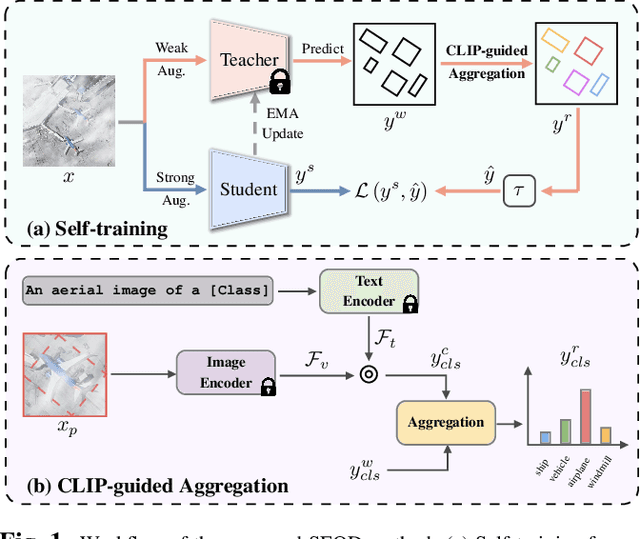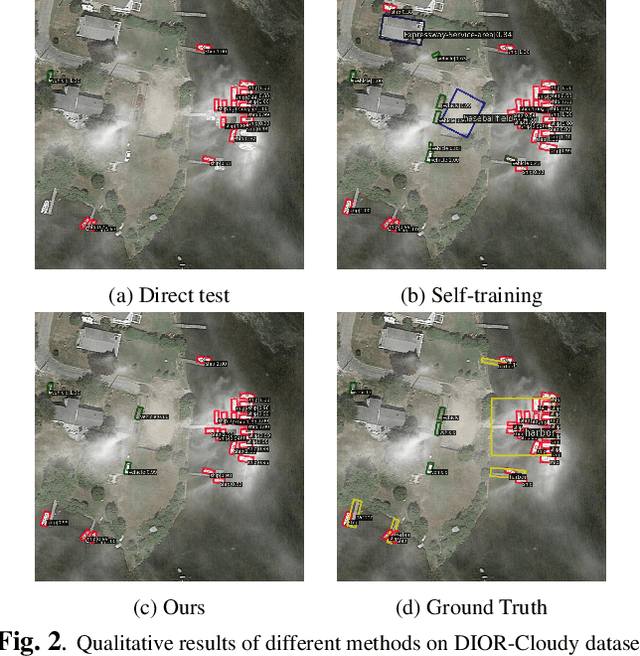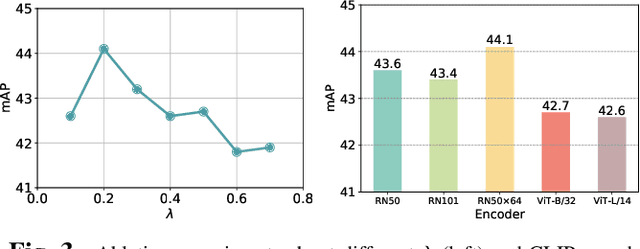Peiliang Gong
Bridging Distribution Gaps in Time Series Foundation Model Pretraining with Prototype-Guided Normalization
Apr 15, 2025Abstract:Foundation models have achieved remarkable success across diverse machine-learning domains through large-scale pretraining on large, diverse datasets. However, pretraining on such datasets introduces significant challenges due to substantial mismatches in data distributions, a problem particularly pronounced with time series data. In this paper, we tackle this issue by proposing a domain-aware adaptive normalization strategy within the Transformer architecture. Specifically, we replace the traditional LayerNorm with a prototype-guided dynamic normalization mechanism (ProtoNorm), where learned prototypes encapsulate distinct data distributions, and sample-to-prototype affinity determines the appropriate normalization layer. This mechanism effectively captures the heterogeneity of time series characteristics, aligning pretrained representations with downstream tasks. Through comprehensive empirical evaluation, we demonstrate that our method significantly outperforms conventional pretraining techniques across both classification and forecasting tasks, while effectively mitigating the adverse effects of distribution shifts during pretraining. Incorporating ProtoNorm is as simple as replacing a single line of code. Extensive experiments on diverse real-world time series benchmarks validate the robustness and generalizability of our approach, advancing the development of more versatile time series foundation models.
Augmented Contrastive Clustering with Uncertainty-Aware Prototyping for Time Series Test Time Adaptation
Jan 01, 2025



Abstract:Test-time adaptation aims to adapt pre-trained deep neural networks using solely online unlabelled test data during inference. Although TTA has shown promise in visual applications, its potential in time series contexts remains largely unexplored. Existing TTA methods, originally designed for visual tasks, may not effectively handle the complex temporal dynamics of real-world time series data, resulting in suboptimal adaptation performance. To address this gap, we propose Augmented Contrastive Clustering with Uncertainty-aware Prototyping (ACCUP), a straightforward yet effective TTA method for time series data. Initially, our approach employs augmentation ensemble on the time series data to capture diverse temporal information and variations, incorporating uncertainty-aware prototypes to distill essential characteristics. Additionally, we introduce an entropy comparison scheme to selectively acquire more confident predictions, enhancing the reliability of pseudo labels. Furthermore, we utilize augmented contrastive clustering to enhance feature discriminability and mitigate error accumulation from noisy pseudo labels, promoting cohesive clustering within the same class while facilitating clear separation between different classes. Extensive experiments conducted on three real-world time series datasets and an additional visual dataset demonstrate the effectiveness and generalization potential of the proposed method, advancing the underexplored realm of TTA for time series data.
Temporal Source Recovery for Time-Series Source-Free Unsupervised Domain Adaptation
Sep 29, 2024Abstract:Source-Free Unsupervised Domain Adaptation (SFUDA) has gained popularity for its ability to adapt pretrained models to target domains without accessing source domains, ensuring source data privacy. While SFUDA is well-developed in visual tasks, its application to Time-Series SFUDA (TS-SFUDA) remains limited due to the challenge of transferring crucial temporal dependencies across domains. Although a few researchers begin to explore this area, they rely on specific source domain designs, which are impractical as source data owners cannot be expected to follow particular pretraining protocols. To solve this, we propose Temporal Source Recovery (TemSR), a framework that transfers temporal dependencies for effective TS-SFUDA without requiring source-specific designs. TemSR features a recovery process that leverages masking, recovery, and optimization to generate a source-like distribution with recovered source temporal dependencies. To ensure effective recovery, we further design segment-based regularization to restore local dependencies and anchor-based recovery diversity maximization to enhance the diversity of the source-like distribution. The source-like distribution is then adapted to the target domain using traditional UDA techniques. Extensive experiments across multiple TS tasks demonstrate the effectiveness of TemSR, even surpassing existing TS-SFUDA method that requires source domain designs. Code is available in https://github.com/Frank-Wang-oss/TemSR.
Evidentially Calibrated Source-Free Time-Series Domain Adaptation with Temporal Imputation
Jun 04, 2024



Abstract:Source-free domain adaptation (SFDA) aims to adapt a model pre-trained on a labeled source domain to an unlabeled target domain without access to source data, preserving the source domain's privacy. While SFDA is prevalent in computer vision, it remains largely unexplored in time series analysis. Existing SFDA methods, designed for visual data, struggle to capture the inherent temporal dynamics of time series, hindering adaptation performance. This paper proposes MAsk And imPUte (MAPU), a novel and effective approach for time series SFDA. MAPU addresses the critical challenge of temporal consistency by introducing a novel temporal imputation task. This task involves randomly masking time series signals and leveraging a dedicated temporal imputer to recover the original signal within the learned embedding space, bypassing the complexities of noisy raw data. Notably, MAPU is the first method to explicitly address temporal consistency in the context of time series SFDA. Additionally, it offers seamless integration with existing SFDA methods, providing greater flexibility. We further introduce E-MAPU, which incorporates evidential uncertainty estimation to address the overconfidence issue inherent in softmax predictions. To achieve that, we leverage evidential deep learning to obtain a better-calibrated pre-trained model and adapt the target encoder to map out-of-support target samples to a new feature representation closer to the source domain's support. This fosters better alignment, ultimately enhancing adaptation performance. Extensive experiments on five real-world time series datasets demonstrate that both MAPU and E-MAPU achieve significant performance gains compared to existing methods. These results highlight the effectiveness of our proposed approaches for tackling various time series domain adaptation problems.
CLIP-guided Source-free Object Detection in Aerial Images
Jan 10, 2024



Abstract:Domain adaptation is crucial in aerial imagery, as the visual representation of these images can significantly vary based on factors such as geographic location, time, and weather conditions. Additionally, high-resolution aerial images often require substantial storage space and may not be readily accessible to the public. To address these challenges, we propose a novel Source-Free Object Detection (SFOD) method. Specifically, our approach is built upon a self-training framework; however, self-training can lead to inaccurate learning in the absence of labeled training data. To address this issue, we further integrate Contrastive Language-Image Pre-training (CLIP) to guide the generation of pseudo-labels, termed CLIP-guided Aggregation. By leveraging CLIP's zero-shot classification capability, we use it to aggregate scores with the original predicted bounding boxes, enabling us to obtain refined scores for the pseudo-labels. To validate the effectiveness of our method, we constructed two new datasets from different domains based on the DIOR dataset, named DIOR-C and DIOR-Cloudy. Experiments demonstrate that our method outperforms other comparative algorithms.
 Add to Chrome
Add to Chrome Add to Firefox
Add to Firefox Add to Edge
Add to Edge